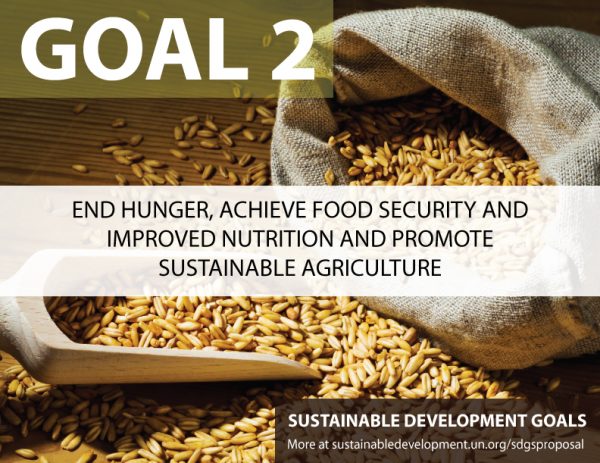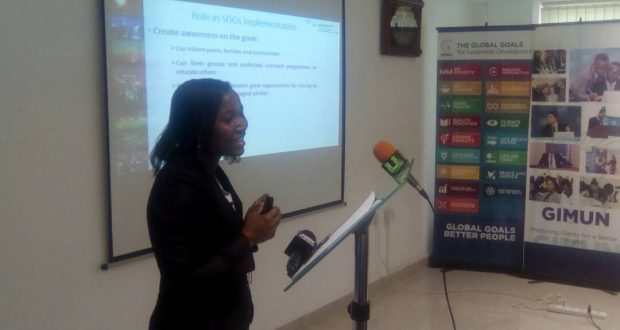Progress of Sustainable Development Goals: Goal 2
- Posted on
- Comment
 Sustainable development has been an evolving topic for discussion since the report from the World Commission on Environment and Development, the Brundtland commission, as it was popularly known defined sustainable development as “development that meets the needs of the present generations without compromising the ability of future generations to meet their own needs”. Tasking current generation to improve their standards of living whilst adequately maintaining resources for the generations yet to be born. Sustainable development aims to achieve economic, social and environmental objectives, these objectives interact and form a basis for which sustainable development can be measured and monitored. The food and agriculture sector plays an important role in Ghana as it is the backbone of the economy and one of the major foreign exchange earners while creating employment for a large number of individuals along the value chain.
Sustainable development has been an evolving topic for discussion since the report from the World Commission on Environment and Development, the Brundtland commission, as it was popularly known defined sustainable development as “development that meets the needs of the present generations without compromising the ability of future generations to meet their own needs”. Tasking current generation to improve their standards of living whilst adequately maintaining resources for the generations yet to be born. Sustainable development aims to achieve economic, social and environmental objectives, these objectives interact and form a basis for which sustainable development can be measured and monitored. The food and agriculture sector plays an important role in Ghana as it is the backbone of the economy and one of the major foreign exchange earners while creating employment for a large number of individuals along the value chain.
- Goal 2 aims to end hunger and all forms of malnutrition by 2030. It also commits to universal access to safe, nutritious and sufficient food at all times of the year. This will require sustainable food production systems and resilient agricultural practices, equal access to land, technology, markets and international cooperation on investments in infrastructure and technology to boost agricultural productivity.
- The fight against hunger has progressed over the past 15 years. Globally, the prevalence of hunger has declined, from 15 per cent according to figures for 2000 to 2002, to 11 per cent according to figures for 2014 to 2016. However, more than 790 million people worldwide still lack regular access to adequate amounts of dietary energy. If current trends continue, the zero hunger target will be largely missed by 2030. Many countries failed to reach the target set as part of the Millennium Development Goals, of halving the proportion of people who suffer from hunger, faced natural and human-induced disasters or political instability, resulting in protracted crises, with increased vulnerability and food insecurity affecting large parts of the population. The persistence of hunger is no longer simply a matter of food availability. More and better data on access to food can enable the tracking of progress and guide interventions to fight food insecurity and malnutrition.
- Globally, in 2014, nearly 1 in 4 children under the age of 5, an estimated total of 159 million children, had stunted growth. Stunting is defined as inadequate height for age, an indicator of the cumulative effects of under nutrition and infection. Southern Asia and sub-Saharan Africa accounted for three quarters of the children under age 5 with stunted growth in 2014. Another aspect of child malnutrition is the growing share of children who are overweight, a problem affecting nearly every region. Globally, between 2000 and 2014, the percentage of children under the age of 5 who were overweight grew from 5.1 per cent to 6.1 per cent.
- Ending hunger and malnutrition relies heavily on sustainable food production systems and resilient agricultural practices. The government of Ghana aims to popularise farming by encouraging many people to take it up, a campaign dubbed “planting for food and jobs”. Projected to start in 2017, the government will make available seeds/seedlings, fertilisers, extension services and marketing to farmers. This campaign is expected to create employment for about 750,000 people engaged in various sections of the agricultural value chain.
- To increase the productive capacity of agriculture, more investment is needed, both public and private, from domestic and foreign sources. However, recent trends in government spending are not favourable. The agriculture orientation index, defined as agriculture’s share of government expenditures divided by the sector’s share of gross domestic product (GDP), fell globally from 0.37 to 0.25 between 2001 and 2013. The decline in the index was interrupted only temporarily during the food price crisis of 2006 to 2008, when governments increased agricultural spending.
- Since the late 1990s, the percentage of aid for supporting agriculture in developing countries has been stable at around 8 per cent, when measured as a share of sector-allocable aid from member countries of the Development Assistance Committee of the Organization for Economic Cooperation and Development (OECD). This has decreased, from a peak of 20 per cent in the mid-1980s, as a result of donors beginning to focus more on improving governance, building social capital and bolstering fragile States.
Other targets of Goal 2 include are to maintain the genetic diversity of seeds, cultivated plants and farmed and domesticated animals and their related wild species, including through soundly managed and diversified seed and plant banks at the national, regional and international levels, and promote access to and fair and equitable sharing of benefits arising from the utilization of genetic resources and associated traditional knowledge, as internationally agreed. Increase investment, including through enhanced international cooperation, in rural infrastructure, agricultural research and extension services, technology development and plant and livestock gene banks in order to enhance agricultural productive capacity in developing countries, in particular least developed countries. Correct and prevent trade restrictions and distortions in world agricultural markets, including through the parallel elimination of all forms of agricultural export subsidies. Adopt measures to ensure the proper functioning of food commodity markets and their derivatives and facilitate timely access to market information, including on food reserves, in order to help limit extreme food price volatility. Globally, present and future agricultural strategies and policies will be in line with the achievement of these targets notwithstanding the need to address country based agricultural challenges.
Akwasi A. Tagoe. MSc Agricultural and Environmental Science – Agricultural Services Manager, Green Coast Foods.
Source: Report of the Secretary-General, “Progress towards the Sustainable Development Goals” source source2







 (Selorm) |
(Selorm) |  (Nana Kwesi)
(Nana Kwesi)